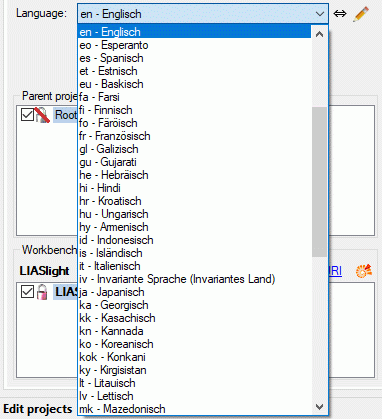Edit Language Codes
Edit language codes
In the Diversity Descriptions database language codes are used for two purposes: The first one is to indicate the project’s default language. Furthermore for the most important parts of the data translations may be entered, which carry a laguage code, too.
By all means the language codes consists of an at most three-letter
string. In the application you may select the language code from a
drop-down box, which shows the language code - in most cases a
two-letter ISO 639-1 code - and the corresponding long name. By clicking
the  button you may change the display sequence (see
images below).
button you may change the display sequence (see
images below).



Most of the values are provided by the operating system. Anyway there might be the need to include additional values, e.g. “eo” for Esperanto. For those cases as a second source additional language codes may be stored in the application’s settings. Finally, language codes that are present in the database but neither included in the operating system’s list nor the application settings will be included at the end of the selection list with red background, if neccessary.
To edit the language codes, click the 

By clicking OK the changes will be stored in the settings.